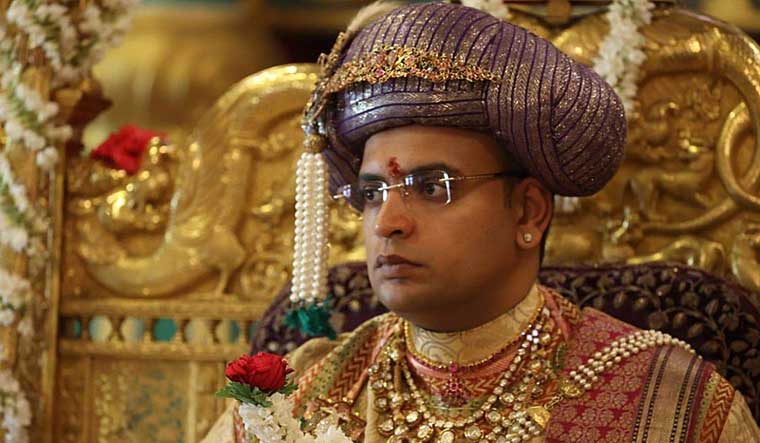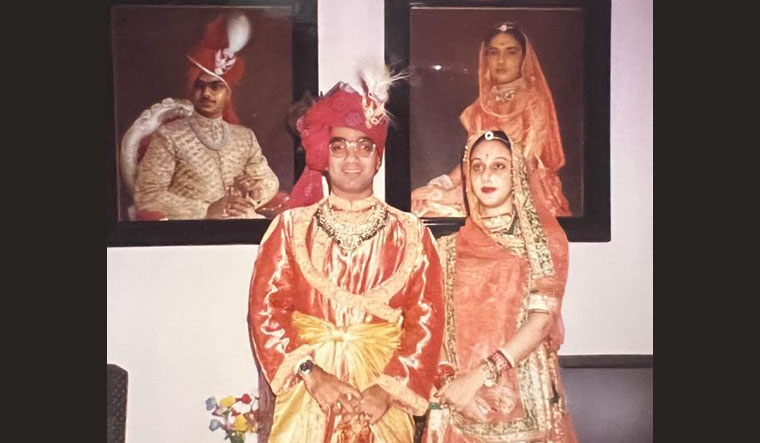In Himachal Pradesh’s Kangra last month, it was a royal affair. The Maharaja of Kangra Aishwarya Katoch was crowned on April 30 at the Kangra Fort in the presence of 4,300 people and at least 40 royal families of India. The occasion went down in history and became a day that will be remembered for years to come – more so because Kangra observed a coronation after 400 years. Aishwarya Katoch explains the gap and says, “We lost the Fort to the Mughals in 1620 and all following Rajas had their coronation at where they were based or where they were at the time of their predecessor’s death.”
His coronation was done in three parts. On the evening of his father's cremation, the Senior Rajputs of the clan anointed him the next Maharaja. As it was a period of mourning, it was a quiet and private ceremony. On that day, he took over his father’s duties. “In Himachal, we believe that the soul of the departed stays with us for a year and hence, he is still the ruler. After long deliberations and taking guidance from the Agni Puran, it was decided that the Namhi of 2023 will be the most auspicious day for my Raj Tilak,” he says.
The ceremony of Raj Tilak was performed in two parts — on April 29, five KulPurohits performed the poojas of 108 baths and then did the Rajyabhishek which gives the King ‘Vishnu roop’. After that a havan is performed at the KulDevi temple followed by Kul Devi pooja for blessing the new king. Post this, in the function for the public, family and friends, the royal family comes out in their finery.
Though the coronation event might not be as grand as the coronation of King Charles III that took place on May 6 in the presence of more than 2000 people and a global live telecast, Indian royal families follow their own traditional and unique coronation ceremonies. The scale of the coronation ceremonies in the Indian royal families might have dimmed down ever since India became a democracy yet remains a significant event in the royal households to announce accession and to keep their legacy alive.
 Aishwarya Katoch of Kangra
Aishwarya Katoch of Kangra
Princess Brijeshwari Kumari Gohil, from the royal family of Bhavnagar in Gujarat, says that the scale of coronation ceremonies has especially toned down after independence, though the traditions and rituals remain the same. “Initially during Raj Tilak all the Bhaiyats and surrounding Royalties and the in-laws would attend. After Independence, it was upto who was invited.” The last coronation in their family was of her father’s - Maharaja Vijayraj Singh Gohil of Bhavnagar in 1994. Before him, when India was a British colony, her great grandfather Maharaja Krishnakumar Singh, who was the first to hand over his kingdom to democratic India and became the first governor of Madras, was crowned. He was a minor when he took the throne.
In the royal family of Bhavnagar, the to-be king wears an eagle sarpech (turban ornament) on his headgear. This family heirloom is worn only during the wedding and the Raj Tilak. An angrakha is also worn only during these two occasions. The Raj Tilak is done by a Kumbhar family (potters) from a region called Hathab and this passed down through generations. The descendant of the particular Kumbhar family’s elder son by blood performs the ceremony with his thumb. This has continued for centuries now.
Gohil informs that the coronation is only for the male heir (eldest son) to the throne while women are not crowned.
For Mayurbhanj, located in Odisha, the last coronation was performed in 2001 for Praveen Chandra Bhanjdeo, 47th ruler of the Bhanja dynasty. The district recently rose to global fame when it was listed in the Time magazine’s ‘World’s Greatest Places 2023’. Princess Akshita M. Bhanjdeo, the daughter of Praveen Chandra Bhanjdeo, says that Brahmins and the rajpurohits tie the turban for the Maharaja during the ceremony and he carries a sword that only the King can carry and goes to the temple to seek blessings. As he is being crowned, he is not allowed to perform the last rites of his predecessor, his father. Rather a younger brother or a cousin performs the rituals with a Brahmin for 13 days during which he sleeps on the floor. On the 13th day, the King’s wife’s family attends and presents the royal family with coloured clothes and everyone then changes from dull clothes (worn during mourning of the previous King) into bright clothes for the ceremony.
 Yaduveer Krishnadatta Chamaraja Wadiyar
Yaduveer Krishnadatta Chamaraja Wadiyar
Similarly, when Maharaja Anant Pratap Deo of Odisha’s Kalahandi’s Raj Tilak or coronation was performed on September 3, 2019, he was made to sit on the Kalahandi Gaddi. He says, “It was a very solemn affair therefore only family members and some extended family and the zamindars (Rajas) of Kalahandi were invited. The general public were also present.” He says that earlier the Maharaja's Raj Tilak was done by the Kondhs (a tribal community) as it is a tribal area. But now the Raj Tilak is done by the Brahmins and the uncle of the Maharaja. “The first order the Maharaja gives is to cremate his father and therefore it's a sad affair,” he tells.
The royal family of Jaipur and that of Mysore, however, had grand ceremonies to announce their new Kings. In 2014, 12-year-old Maharaja Padmanabh Singh was crowned the Maharaja of Jaipur as the City Palace came to life with several attendees and traditional ceremonies being performed. The city of Mysore too was adorned and lit up in celebration as Yaduveer Krishnadatta Chamaraja Wadiyar was crowned the 27th King of the Mysore royal family in 2015, after 41 years’ since the last King’s coronation. At the decked up Amba Vilas Palace, he sat on a silver throne. His ascension also ended the long gloom after the death of Srikantadatta Narasimharaja Wadiyar in 2013.



